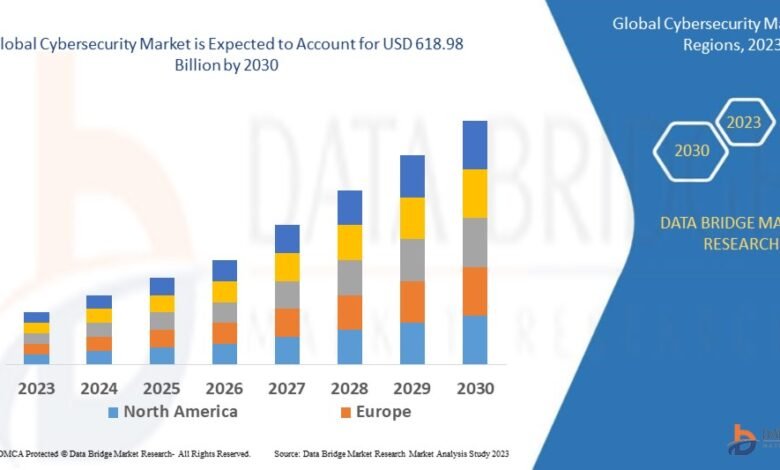
Introduction
The important role of cybersecurity in today’s increasingly digital environment cannot be emphasized. As technology evolves, so do the threats posed by malicious actors seeking to exploit vulnerabilities in digital systems. To stay ahead of these threats, it’s crucial to anticipate future trends in cybersecurity and adapt accordingly.
Definition
Cybersecurity solutions are those that help businesses identify, track, report, and defend against online risks in order to protect the privacy of their data. Cybersecurity is the category under which safeguarding devices with internet connections fall. Users are protected from a range of online threats via cybersecurity.
Let’s explore some key trends that are expected to shape the future of digital defense.
Rise of Artificial Intelligence and Machine Learning:
- AI and machine learning are revolutionizing cybersecurity by enabling more efficient threat detection and response.
- AI-powered tools can analyse vast amounts of data to identify patterns and anomalies, helping to detect previously unseen threats.
- Expect to see increased integration of AI and machine learning into cybersecurity platforms, making defense mechanisms more adaptive and proactive.
Zero Trust Architecture:
- In today’s evolving threat landscape, traditional perimeter-based security models are no longer enough.
- Zero Trust Architecture operates on the principle of “never trust, always verify,” requiring continuous authentication and authorization for every user and device.
- This approach minimizes the risk of lateral movement by attackers within a network and enhances overall security posture.
Quantum-Safe Cryptography:
- It is possible that traditional cryptography algorithms will be broken with the introduction of quantum computing.
- Quantum-safe cryptography, also known as post-quantum cryptography, involves the development of algorithms that can withstand attacks from quantum computers.
- As quantum computing technology advances, organizations will need to transition to quantum-safe cryptographic solutions to protect sensitive data.
Cloud Security Challenges:
- As more businesses migrate their operations to the cloud, ensuring the security of cloud-based infrastructure becomes increasingly important.
- Cloud security challenges include data breaches, misconfigurations, and insider threats.
- Solutions such as cloud-native security tools and comprehensive security policies will be essential to mitigate these risks effectively.
IoT Security Concerns:
- The proliferation of Internet of Things (IoT) devices introduces new cybersecurity challenges.
- Since many IoT devices lack strong security measures, they are open to abuse.
- Securing IoT ecosystems will require the implementation of device authentication, encryption, and regular security updates.
Biometric Authentication Adoption:
- Biometric authentication methods, such as fingerprint scanning and facial recognition, offer enhanced security compared to traditional password-based systems.
- Expect to see wider adoption of biometric authentication across various industries, especially in sectors handling sensitive information.
- Biometric data, however, raises privacy concerns, necessitating careful implementation and compliance with regulations such as GDPR.
Enhanced Threat Intelligence Sharing:
- Collaboration and information sharing among organizations and cybersecurity professionals are crucial for staying ahead of evolving threats.
- Threat intelligence platforms enable the sharing of real-time threat data and analysis, facilitating a more proactive defense posture.
- Public-private partnerships and industry-wide initiatives will play a vital role in fostering a culture of collective defense.
Focus on Human-Centric Security:
- Recognizing that humans are often the weakest link in cybersecurity, there’s a growing emphasis on human-centric security measures.
- Employee training and awareness programs are essential for mitigating risks such as phishing attacks and social engineering tactics.
- Additionally, user-friendly security solutions that prioritize usability without compromising on security will become increasingly prevalent.
Growth Rate of Cybersecurity Market
According to Data Bridge Market Research’s analysis, the worldwide cybersecurity market, which was valued at USD 244.70 billion in 2022, is projected to grow at a compound annual growth rate (CAGR) of 6.4% from 2023 to 2030, when it is estimated to reach USD 618.98 billion.
Conclusion
The future of cybersecurity promises both challenges and opportunities as technology continues to advance. By staying abreast of emerging trends and implementing robust security measures, organizations can better protect themselves against evolving threats in the digital landscape. From leveraging artificial intelligence to adopting a Zero Trust Architecture approach, proactive measures are key to ensuring a secure and resilient cybersecurity posture in the years to come.
To Read more click here.
https://www.databridgemarketresearch.com/reports/global-cybersecurity-market





